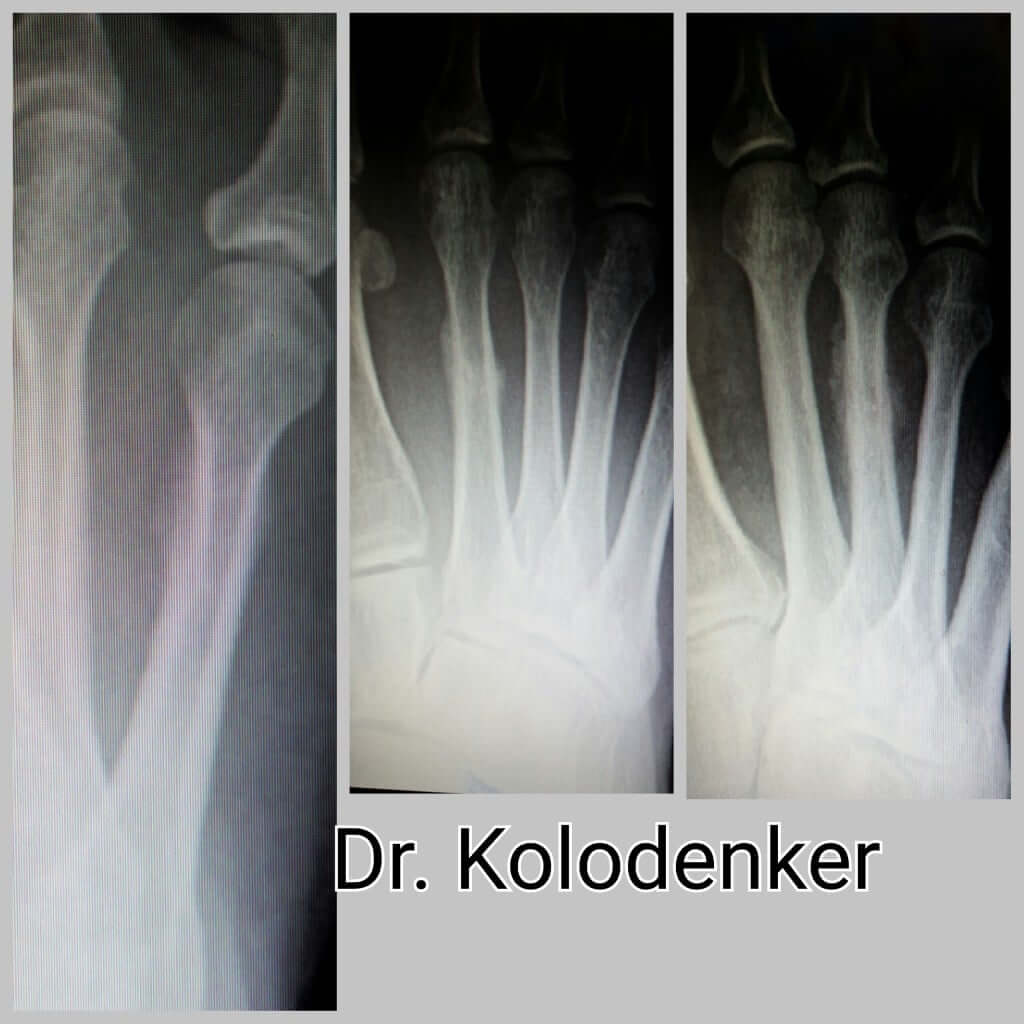


When internal damage accumulates the macroscopic architecture may fail and the bone may overtly fracture into two or more pieces. This is sometimes described as a stress reaction. Initially in a stress fracture, the gross contour of the bone is normal and the damage is internal. It occurs when the bone itself is abnormal, as in osteoporosis, and the cycle of loading would otherwise not have led to a fracture. The second type of stress fracture is an insufficiency fracture. Structural failure in the setting of normal bone remodeling that is unable to match the demands of high cycles of subcritical load is called a fatigue fracture. The first is when the bone metabolism is normal, yet the number of cycles is just too high for it to effectively adapt. There are, however, two instances where cyclical loads do lead to clinical problems. This damage is not a problem so long as the bone remodeling cycle (osteoclasts remove the damaged tissue and osteoblasts synthesize a healthy replacement) can maintain the structural integrity of the bone. Repetitive application of a subcritical force causes microscopic damage to the bone. However, if too many cycles of such load are applied, or are applied quicker than the bone is able to adapt, stress fractures may ensue. Bones can also be broken by cyclical application of subcritical loads, loads which do not cause damage if applied only a limited number of times. When a sudden injury generates a load higher than the bone’s strength, the bone will fracture. Of course, a sufficiently high load applied at one time can cause bone to break. These injuries are commonly seen in the 2nd or 3rd metatarsal neck region, the base of 5th metatarsal (Jones Fracture), the sesamoid bones of the great toe, the navicular bone, or the calcaneus tuberosity.īone is built to withstand load. Repetitive activities such as walking, running and jumping can subject the bones of the foot to large forces that potentially lead to stress fractures, especially if these activities are started abruptly and without a ramp up period that allows the bone to effectively adapt. These are called insufficiency fractures. Separately, fractures can also occur in bone that is not healthy, such as in the setting of osteoporosis, and does not stand up to even few cycles of repetitive forces. In cases where the bone is entirely healthy, and the cause is simply too many cycles of load, the injury is denoted as a fatigue or stress fracture. Stress fractures occur when a cycle of repetitive forces, none on their own sufficient to cause injury, is applied such that these forces exceed the bone’s ability to adapt and cumulatively damage the bone. Bone can strengthen over time in response to loading, the same way that, conversely, astronauts lose bone mass when the stress of gravity and walking is removed.


 0 kommentar(er)
0 kommentar(er)
